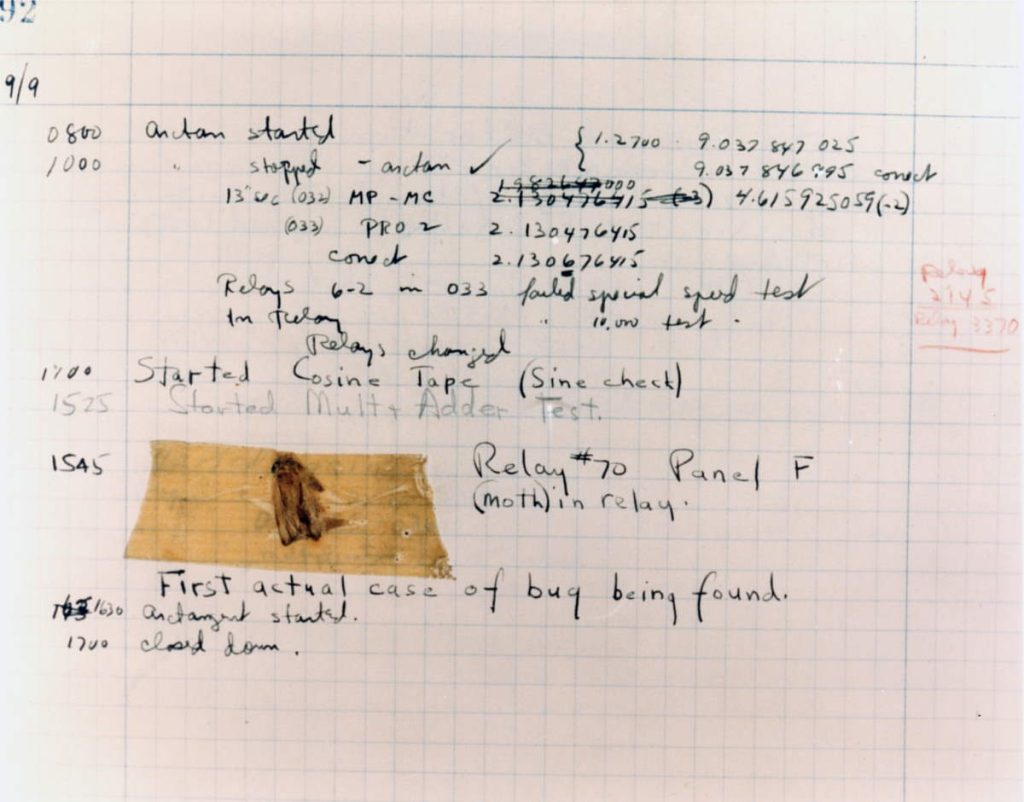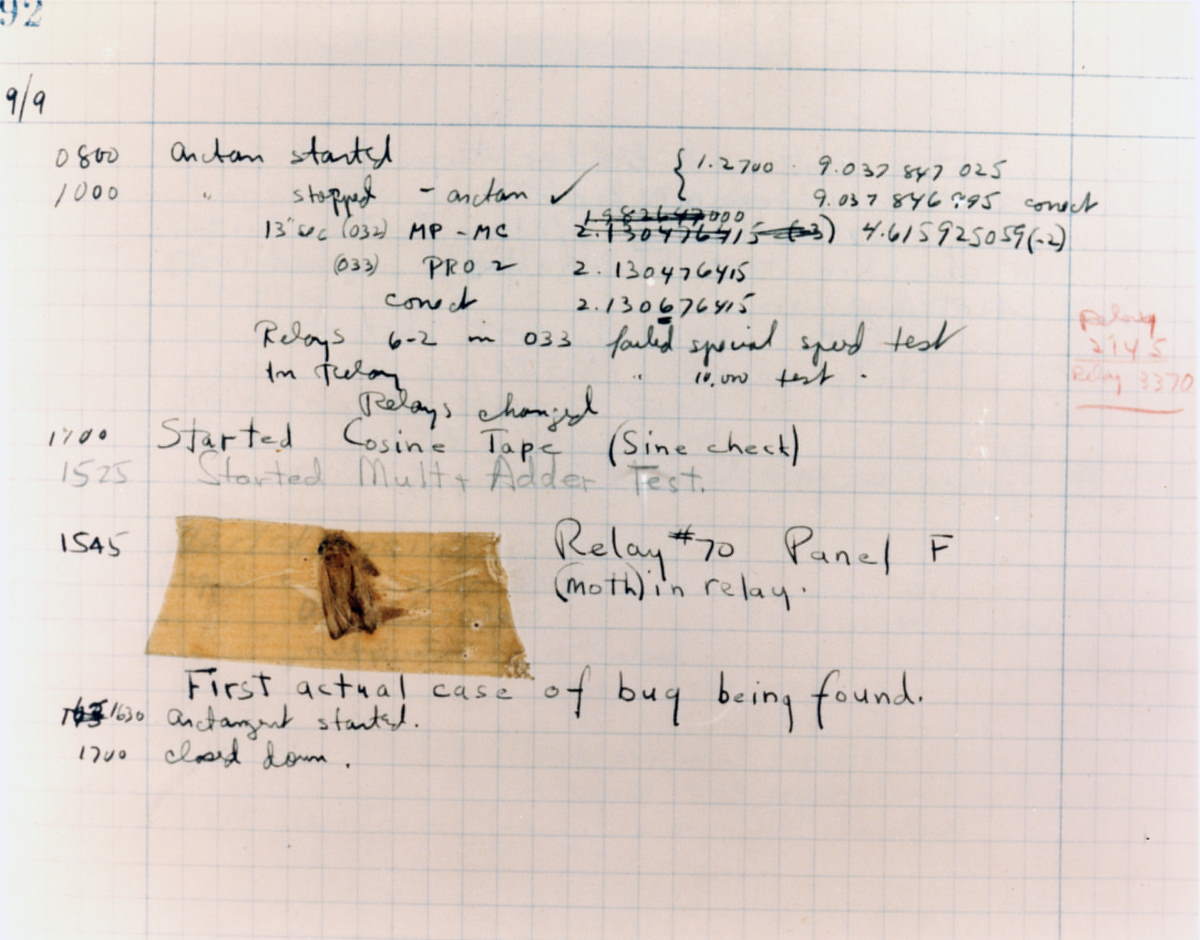On September 9, 1947, a team of computer scientists and engineers operating Harward University’s Mark II electromechanical computer started getting an error. They traced the error and found a moth trapped in a relay. The moth was carefully removed and taped to the logbook with a note saying “first actual case of bug being found”. Urban legend says this was the first case of a computer bug, but it’s not true.
Today’s (September 9) story of what happened this day in Science, Technology, Astronomy, and Space Exploration history.
The first “actual” computer bug
Contrary the popular belief, this “moth” was not the first computer bug. Programmers started making mistakes and creating “bugs” just from the very beginning.
The concept that software might contain errors dates back to Ada Lovelace’s 1843 notes on the analytical engine, in which she speaks of the possibility of program “cards” for Charles Babbage’s analytical engine being erroneous:
“… an analyzing process must equally have been performed in order to furnish the Analytical Engine with the necessary operative data, and that herein may also lie a possible source of error. Granted that the actual mechanism is unerring in its processes, the cards may give it wrong orders.”
Ada Lovelace (10 December 1815 – 27 November 1852) was an English mathematician and writer, chiefly known for her work on Charles Babbage’s proposed mechanical general-purpose computer, the Analytical Engine.
No, the term “computer bug” was NOT inspired by the Harward Mark II moth event
The term “software bug” or “computer bug” was NOT inspired by the Harward Mark II moth event. It’s a myth.
The term “bug” (or the term computer bug/software bug, and the term “debugging”) was not created after that event. The word “bug” has been used to describe technical “glitches” since at least the late 1800s – probably as early as 1620 – and possibly as early as the 12th century.
One common proof that this doesn’t relate back to the famous moth-in-the-computer is in an 1878 paper by the English lawyer, judge, politician, and author Thomas Hughes (20 October 1822 – 22 March 1896), who was quoting Thomas Edison:
“I have the right principle and am on the right track… [it is] then that “Bugs” — as such little faults and difficulties are called — show themselves and months of intense watching, study and labor are requisite before commercial success or failure is certainly reached.”
So we know that Thomas Edison used the term in exactly the modern sense and that the word was already known in technical circles.
The word (bug) probably originates from the Medieval-English word “bugge“, meaning a “Hobgoblin” – which is a mischievous kind of imp who takes joy in screwing up machinery and causing trouble of all kinds.
Also, the note saying “First actual case of bug being found” wouldn’t make sense unless the term “bug” was already in use.
That famous note was written by Grace Hopper (December 9, 1906 – January 1, 1992), the American computer scientist, mathematician, and United States Navy rear admiral.

Sources
- “September 9, 1947 CE: World’s First Computer Bug” on the National Geographic website
- “First Instance of Actual Computer Bug Being Found” on the Computer History website computerhistory.org
- “The very first recorded computer bug” on The Next Web website
- NH 96566-KN The First “Computer Bug” on the Naval History and Heritage Command website
- Senior Software Engineer Steve Baker‘s answer to the question “Is it really true that the term “software bug” was inspired by a true event when a moth created a computer glitch?” on Quora
- Software bug on Wikipedia
- Moon Landings: All-Time List [1966-2025] - February 2, 2025
- What Is Max-Q and Why Is It Important During Rocket Launches? - January 16, 2025
- Top 10 Tallest Rockets Ever Launched [2025 Update] - January 16, 2025
